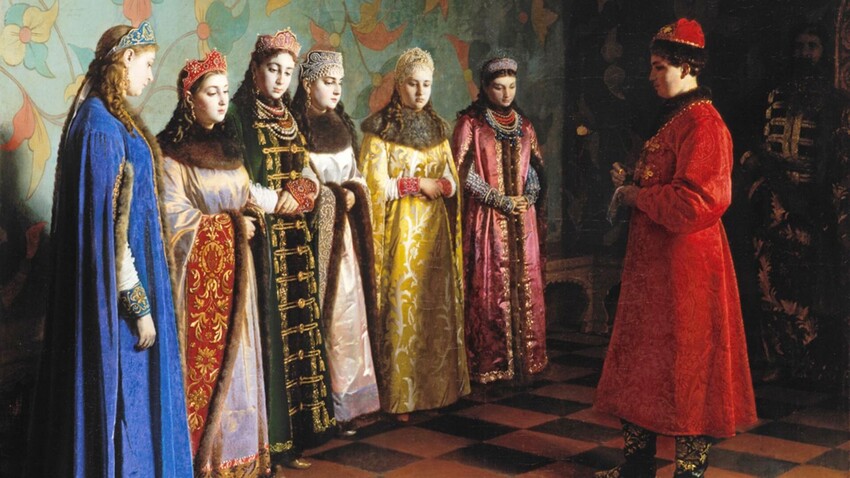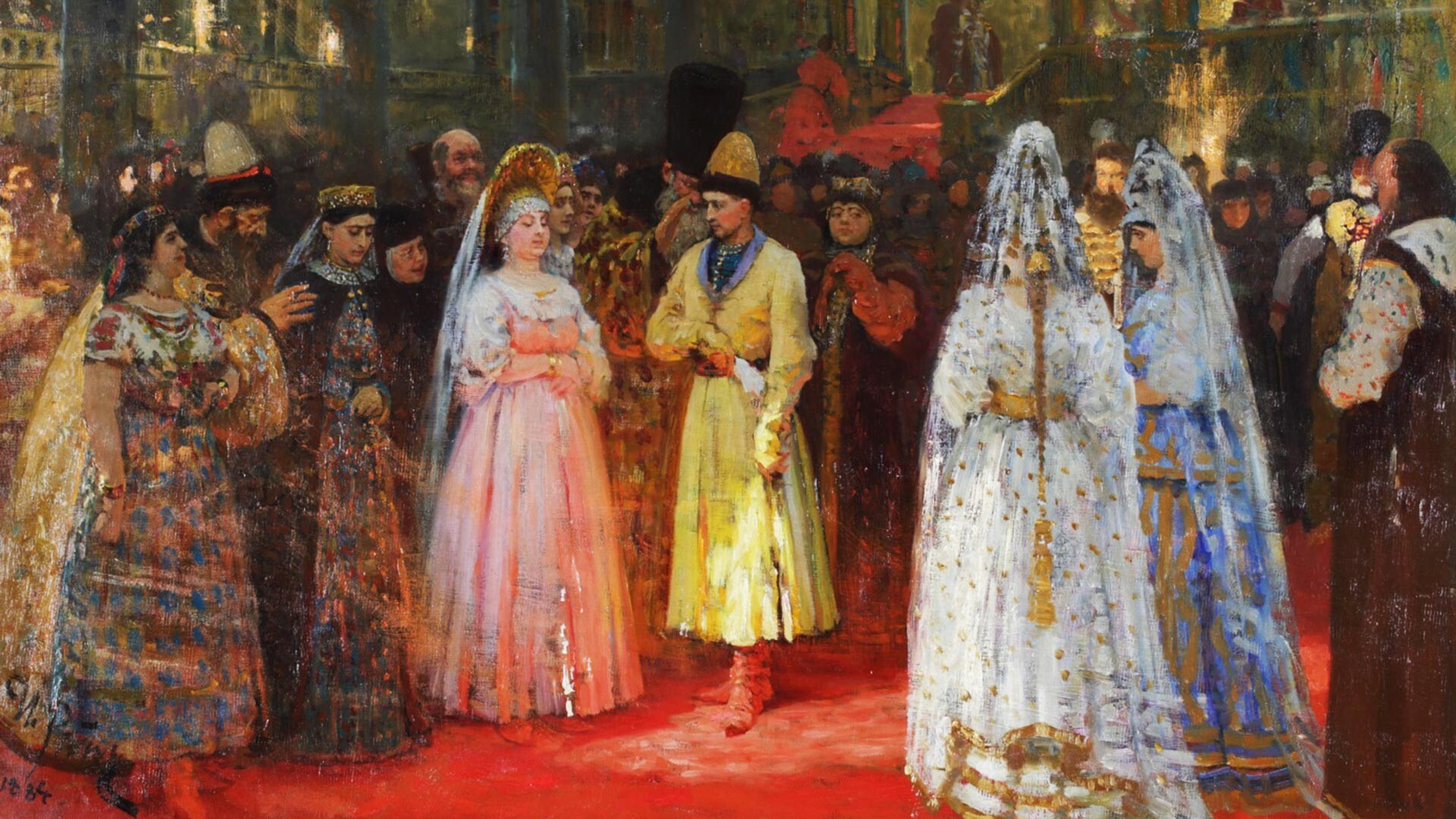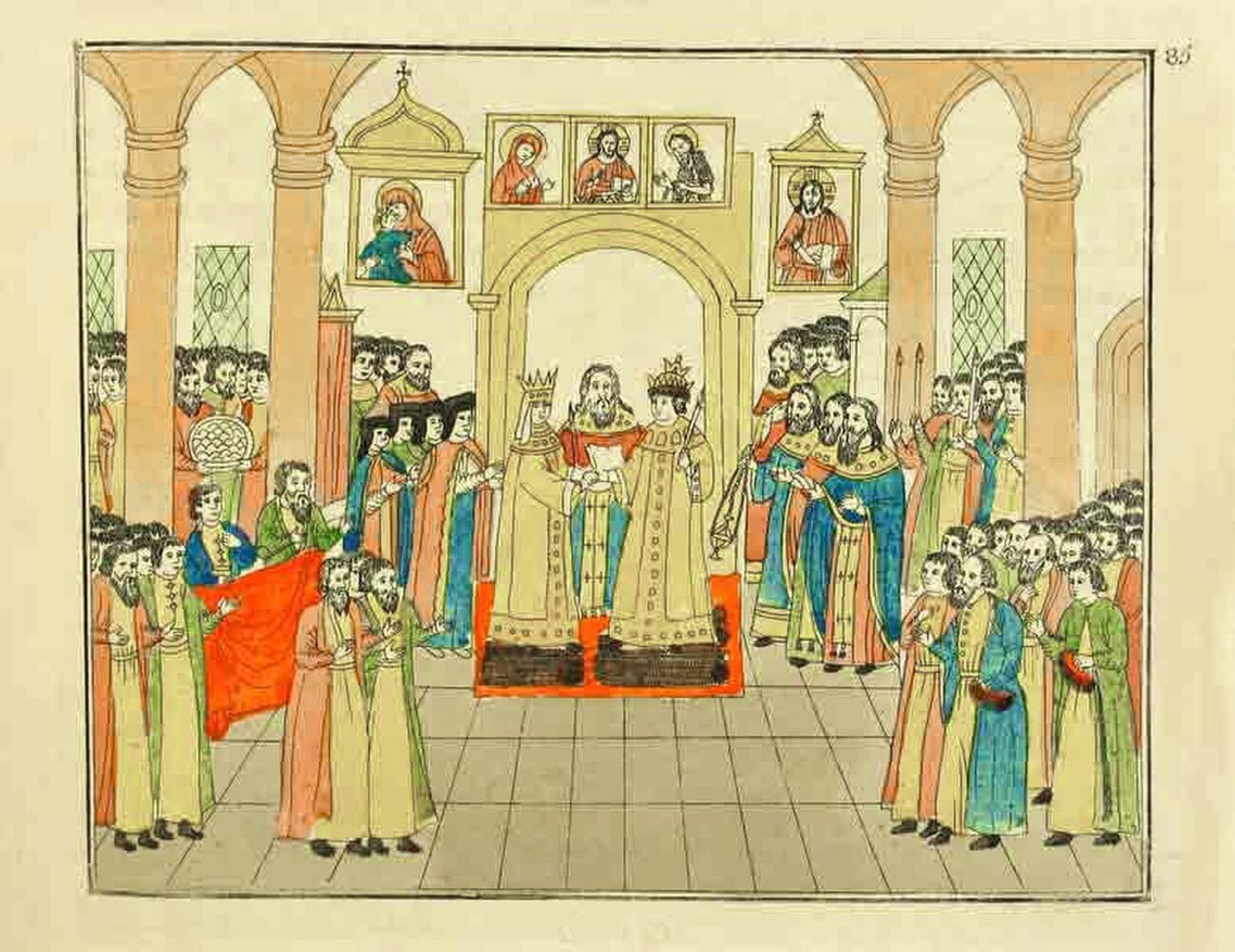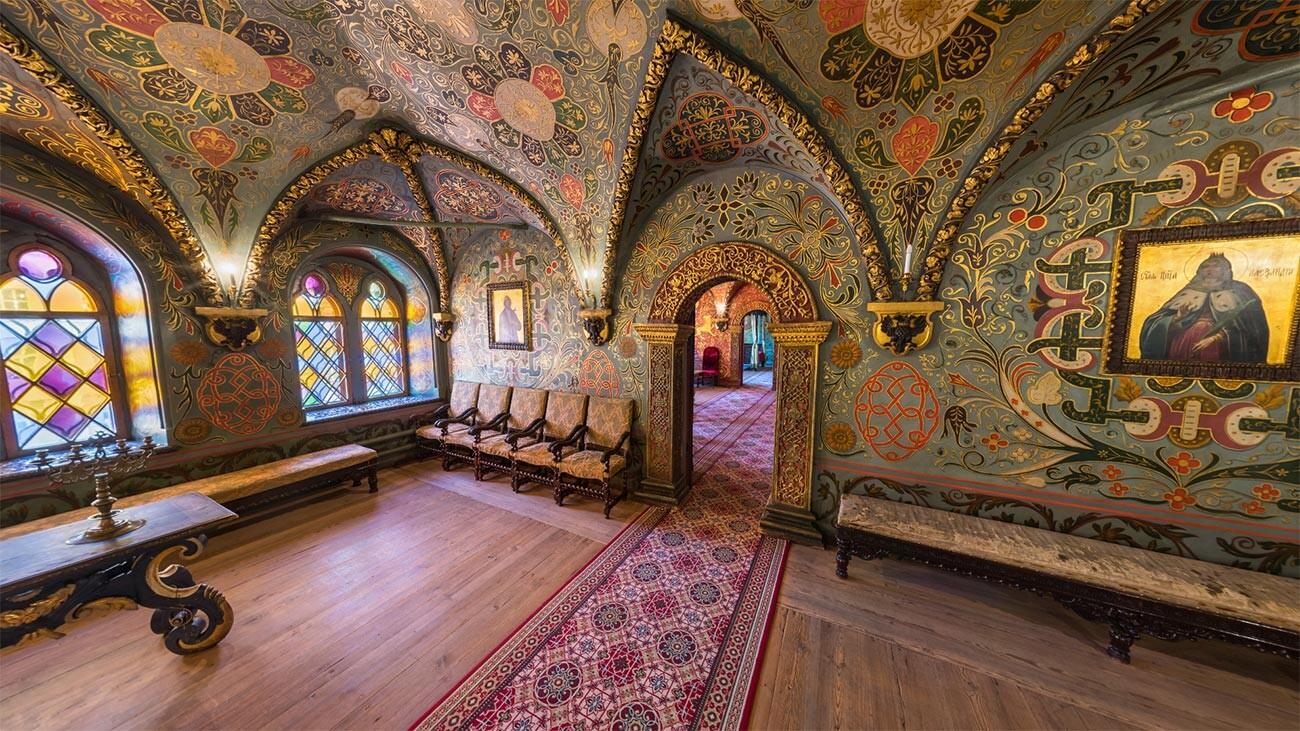
"Tsar Alexey Mikhailovich at the bride-show," by Grigoriy Sedov, 1882
Grigoriy SedovYevfimiya Vsevolozhskaya was the first bride of young tsar Alexei Mikhailovich. She was chosen at a bride-show in 1647. Out of more than 200 candidates, she reached the “final” – she became one of the six girls who were to appear before the 18-year-old tsar in person. And Alexei Mikhailovich chose her!
Yevfimiya had already been placed in her future chambers, called the ‘Tsarina’s Upper Chambers’. But, when she was put into her gala costume for the first time, the maids pulled her headscarf so tightly that Yevfimiya fainted when she came out to the tsar. This incident served as an occasion to accuse the girl’s father of concealing from the tsar’s officials a disease, which, it seemed because of the fainting, his daughter suffered from.

"Bride-show for the Grand Prince," by Ilya Repin, 1884
Ilya RepinToday, historians are sure that Yevfimiya “fainted” at the instigation of Boris Morozov, the tutor of the young tsar. Morozov wanted to promote Maria Miloslavskaya to the tsarina’s place – so he instigated the maids to make Yevfimiya faint. As a result, the entire Vsevolozhsky family was exiled beyond the Urals and Yevfimiya herself was placed under life-long house arrest. Eventually, it was Maria Miloslavskaya who became tsar Alexey’s wife, while Morozov married her sister, becoming tsar’s brother-in-law. That’s the kind of struggle that was going on for the right to become tsarina!
When the tsar decided to marry, this desire set in motion a whole mechanism for finding brides, which, in the Moscow Tsardom, was copied from the Byzantine Empire. First, messengers were sent to all cities and towns, looking for girls that met certain parameters. The chosen ones were invited to Moscow, where they were introduced to the women of the tsar’s family, who examined the girls.

The marriage of Mikhail Fyodorovich and Evdokiya Streshneva, 1626
Public domainThe tsar’s bride had, above all, to bear the tsar a healthy heir. Therefore, noblewomen who picked out the brides for the main bride-show were looking for healthy girls. They asked if they had a lot of brothers and sisters and tried to find out from the accompanying relatives if there were any illnesses in the family. Those who passed the rigorous selection were soon to be presented to the tsar – there were usually a little more than ten such girls.
These applicants were also subjected to a thorough physical examination. As historian Igor Zimin writes, during the period of the Moscow tsardom, obstetrical examination of candidates by midwives was part of the procedure of their admission before the eyes of the tsar. “The most intimate parts of the body were not left without detailed examination,” Zimin added.
Livonian nobles Johann Taube and Elert Kruse in their ‘Story of Ivan the Terrible’ describe how, in 1571, the tsar arranged a show of brides for himself and his son Ivan. Out of 2,000 girls, 24 were chosen, then 12. “They had to take off all their ornaments and dresses and let themselves be examined naked without any difficulty or resistance. [The tsar’s] doctor was present and he was to… comment on their nature, properties and health.”

"Bride-show for Alexey Mikhailovich," by Konstantin Makovsky, 1882
Konstantin MakovskyWhen it came the time for the “finalists” to meet the tsar, they were invited to the tsar’s chambers. The tsar himself made the final choice. Of course, he did not point the finger at the chosen one. Walking through the chambers, the tsar presented the girls with expensive embroidered scarves, throwing them around their necks. One of the girls also received a ring as a sign that she had been chosen.
But, as we know from the history of Evfimiya, even “being chosen” did not guarantee that a girl would become the tsarina. Maria Khlopova, the first bride of Mikhail Feodorovich, was also placed in the tsarina’s chambers after “winning” a bride-show in 1616. After that, all churches of Russia started praying for Khlopova’s health every day, as it was common for the future tsarinas. However, even after that, the Saltykovs, relatives of the tsar’s mother, the nun Martha, turned her against the young Maria and, in addition, poisoned Khlopova, making her vomit uncontrollably in her chambers, unable even to go out.

The Council Chamber of the Teremnoy Palace in the Moscow Kremlin
kremlin.ruWhile the bride vomited, the Boyar Duma announced that “the tsar’s bride is not fit for the sovereign’s joy” – meaning that Khlopova is not healthy enough to have children. Even the doctors’ positive conclusions about Maria’s health could not overcome palace intrigues and, in the end, Khlopova was exiled to Tobolsk. Even seven years later, her mother would not allow her still-unmarried son to return Maria and marry her. He had to obey his mother’s will and eventually marry Maria Dolgorukova, who was chosen by his mother. Unfortunately, Maria fell victim of the palace intrigues – she died shortly after the wedding.
Dear readers,
Our website and social media accounts are under threat of being restricted or banned, due to the current circumstances. So, to keep up with our latest content, simply do the following:
If using any of Russia Beyond's content, partly or in full, always provide an active hyperlink to the original material.
Subscribe
to our newsletter!
Get the week's best stories straight to your inbox